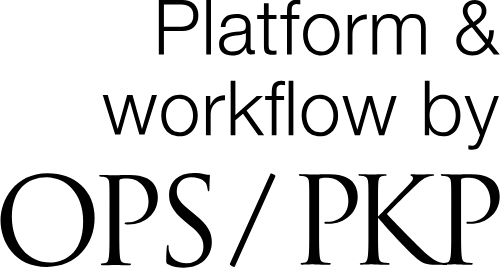An Overview the Role of the CCL2/CCR2/IL-6 Axis in Glioma Progression: Mechanisms, Microglial Reprogramming, and Therapeutic Implications
DOI:
https://doi.org/10.58445/rars.2489Keywords:
glioma, cancer, cancer biologyAbstract
Gliomas are the most frequently occurring brain cancers defined by aggressive, invasive, and chemoresistant growth patterns. These tumors are responsible for a complex immunosuppressive tumor microenvironment mainly dictated by tumor-associated macrophages, including brain-resident microglia and bone-marrow-derived macrophages. Gliomas utilize the CCL2/CCR2/IL-6 axis to recruit and reprogram microglia to a tumor-supportive phenotype. This review article investigates the role of the CCL2/CCR2/IL-6 axis in glioma pathophysiology through elaborate in vitro, in vivo, and transcriptomic methodologies. Therapy targeting this pathway has yielded promising results so far. For instance, preclinical studies revealed that pharmacological inhibition of either CCR2 or IL-6R reduces tumor-associated macrophages (TAMs) recruitment and impairs glioma growth. Nevertheless, several hurdles remain, including species differences that limit the translation of findings to humans due to inherent differences in immune system regulation and tumor biology between commonly used animal models, such as rodents, and humans. Furthermore, incomplete differentiation between microglia and bone marrow-derived macrophages (BMDMs), and systemic effects due to inhibition of these pathways pose significant challenges. Further studies using human-derived models, spatial transcriptomics, and personalized therapies hold future promise for better treatment modalities for glioma.
References
Ataei-Kachoei, Parvin, et al. ‘Inhibition of the IL-6 Signaling Pathway: A Strategy to Combat Chronic Inflammatory Diseases and Cancer’. Cytokine & Growth Factor Reviews, vol. 24, no. 2, 2013, pp. 163–173.
Groblewski, Magdalena, et al. ‘The Role of Selected Chemokines and Their Receptors in the Development of Gliomas’. International Journal of Molecular Sciences, vol. 21, no. 10, MDPI AG, May 2020, p. 3704, https://doi.org/10.3390/ijms21103704.
Gruol, D. L., et al. ‘Increased Astrocyte Expression of IL-6 or CCL2 in Transgenic Mice Alters Levels of Hippocampal and Cerebellar Proteins’. Frontiers in Cellular Neuroscience, vol. 8, 2014.
Hanahan, Douglas, and Robert A Weinberg. “Hallmarks of cancer: the next generation.” Cell, vol. 144, no. 5, 2011, pp. 646–674. doi:10.1016/j.cell.2011.02.013
Hanif, F., et al. ‘Glioblastoma Multiforme: A Review of Its Epidemiology and Pathogenesis through Clinical Presentation and Treatment’. Asian Pacific Journal of Cancer Prevention: APJCP, vol. 18, no. 1, 2017, pp. 3–9.
Jin, Y., et al. ‘Targeting Polarized Phenotype of Microglia via IL6/JAK2/STAT3 Signaling to Reduce NSCLC Brain Metastasis’. Signal Transduction and Targeted Therapy, vol. 7, no. 1, 2022, pp. 1–12.
Joly-Amado, A., et al. ‘CCL2 Overexpression in the Brain Promotes Glial Activation and Accelerates Tau Pathology in a Mouse Model of Tauopathy’. Frontiers in Immunology, vol. 11, 2020.
Liu, Xiaomei, et al. “MiR-409-3p and MiR-1896 co-operatively participate in IL-17-induced inflammatory cytokine production in astrocytes and pathogenesis of EAE mice via targeting SOCS3/STAT3 signaling.” Glia, vol. 67, no. 1, 2019, pp. 101–112. doi:10.1002/glia.23530
Recasens, M., et al. ‘Chronic Exposure to IL-6 Induces a Desensitized Phenotype of the Microglia’. Journal of Neuroinflammation, vol. 18, no. 1, 2021, pp. 1–22.
Selenica, M. L. B., et al. ‘Diverse Activation of Microglia by Chemokine (C-C Motif) Ligand 2 Overexpression in Brain’. Journal of Neuroinflammation, vol. 10, 2013.
Strizova, Z., et al. ‘M1/M2 Macrophages and Their Overlaps - Myth or Reality? Clinical Science’. Clinical Science, vol. 137, no. 15, 1979, pp. 1067–1093.
Zhou, X., et al. ‘Recruitment Mechanisms and Therapeutic Implications of Tumor-Associated Macrophages in the Glioma Microenvironment’. Frontiers in Immunology, vol. 14, 2023.
Downloads
Posted
Categories
License
Copyright (c) 2025 Laasya Pandravada

This work is licensed under a Creative Commons Attribution-NonCommercial-NoDerivatives 4.0 International License.

